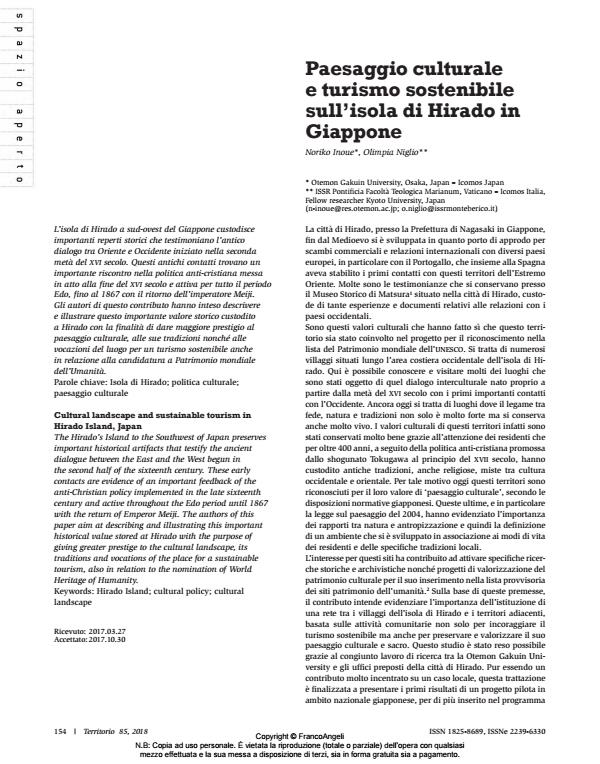Cultural landscape and sustainable tourism in Hirado Island, Japan
Journal title TERRITORIO
Author/s Noriko Inoue, Olimpia Niglio
Publishing Year 2018 Issue 2018/85
Language Italian Pages 8 P. 154-161 File size 3467 KB
DOI 10.3280/TR2018-085018
DOI is like a bar code for intellectual property: to have more infomation
click here
Below, you can see the article first page
If you want to buy this article in PDF format, you can do it, following the instructions to buy download credits

FrancoAngeli is member of Publishers International Linking Association, Inc (PILA), a not-for-profit association which run the CrossRef service enabling links to and from online scholarly content.
The Hirado’s Island to the Southwest of Japan preserves important historical artifacts that testify the ancient dialogue between the East and the West begun in the second half of the sixteenth century. These early contacts are evidence of an important feedback of the anti-Christian policy implemented in the late sixteenth century and active throughout the Edo period until 1867 with the return of Emperor Meiji. The authors of this paper aim at describing and illustrating this important historical value stored at Hirado with the purpose of giving greater prestige to the cultural landscape, its traditions and vocations of the place for a sustainable tourism, also in relation to the nomination of World Heritage of Humanity.
Keywords: Hirado Island; cultural policy; cultural landscape
- Sacred Heritage and Pilgrimages in Cities Olimpia Niglio, pp.145 (ISBN:978-3-031-97136-5)
Noriko Inoue, Olimpia Niglio, Paesaggio culturale e turismo sostenibile sull’isola di Hirado in Giappone in "TERRITORIO" 85/2018, pp 154-161, DOI: 10.3280/TR2018-085018